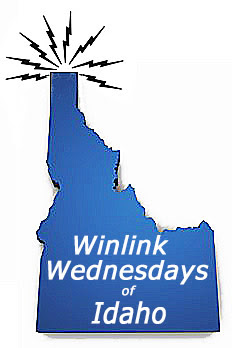The Wilderness Protocol
National Simplex Frequency / National Calling Frequency - 146.520 MHz
W7PJ
The
Wilderness Protocol is a dedicated effort to provide communications between
hams who are hiking, backpacking, and camping in uninhabited areas. This ensures
emergency communications help reaches areas beyond normal repeater coverage.
It is also
used in events when local repeaters are off-the-air, and communications are
needed during emergencies. The Wilderness Protocol is also important during
times of unrest, disasters, and local emergencies.
The Wilderness Protocol recommends that amateur radio
operators monitor the National Calling Frequency, at specific times of the day
in case of emergency or priority calls.
Procedures for
“Wilderness Protocol”
It is recommended amateur operators monitor the National
Calling Frequency as the primary contact frequency, and also monitor your local
simplex frequencies and local repeaters.
The National Calling Frequency should be known nation-wide.
Monitoring this frequency provides support for travelers passing through your
area. Adding and monitoring your local known frequencies provides support for family
and friends.
MONITOR TIMING:
Monitor the standard National Calling Frequency 146.520 MHz, and any local frequencies
every three hours starting at 7:00 a.m., local time, on the hour and until five
minutes past the hour, and repeat every three hours.
Ø 7:00 a.m.
Ø 10:00 a.m.
Ø 1:00 p.m.
Ø 4:00 p.m.
Ø 7:00 p.m.
Ø 10:00 p.m.
ALTERNATE TIMING:
If you have plenty of battery power, monitor five minutes before the hour through
five minutes after the hour, this allows for differences in individual time
settings. You can always listen for longer if you want.
ENHANCED MONITORING:
Fixed stations or portable stations with enough battery power could listen
every hour.
CONTINUOUS
MONITORING: Fixed stations or portable stations with fixed power could
listen at all times that they are near their radio. It’s recommend to use a
scanner to monitor. This can be portable and move with you, saving battery
power on a portable radio until you need to respond. Continuous monitoring is needed especially
during local, regional, and national disasters.
MONITORING STANDARDS: During an emergency, Listen to the frequencies until four minutes past the hour. If there is no
activity, then make a call letting others know you are monitoring and
available. Remember to listen first and then call with a short transmission
message.
For the Wilderness Protocol to work, radio operators need to be listening for calls.
If no one is listening, then there will be no
one to help.
RESPONDING TO A CALL FOR HELP: When a call comes in, listen carefully.
When the caller is done broadcasting, respond and ask questions according to what has happened.
Ø Is there someone I can contact for you?Ø What is the emergency?
Ø Is anyone hurt?
Ø Where are you located?
· Home address
· Road name with mile marker
· Lat & Long
· Trail name
· Campground name
If needed, contact 911 to report the incident. If you unable
to call 911, you may be able to relay emergency information through another amateur
operator who has better access to a repeater and/or 911.
MAKING AN EMERGENCY
CALL:
Immediately: program the National Calling Frequency into
your radio(s) 146.520 MHz, before you need it.
Whenever you can, try calling on the hour, as listed above.
When you need help, start by listening to the frequencies
you have programmed in your radio. If you hear someone using a channel, ask to
break in.
If no one is talking on the radio, pick a channel based on
what you know of the area; for example, a local repeater. If you don’t know the
area, start by using the National Calling Frequency.
When you call out, always say the name of the channel you
are on. Example: This is KC7*** on the National 52 with emergency traffic.
This helps when someone is scanning frequencies and only
hears your message before the signal drops and goes back to scanning. This way,
they heard what channel you are using and can respond on the same channel
Repeat as needed, and try other channels you have programed
in your radio
PRIORITY TONE
SIGNALS: To help reach out when time is critical, this method is suggested
for priority radio transmissions only.
Use the LONG TONE ZERO (LTZ). Begin calls for assistance
with about 10 seconds of tone. To do this, key up and hold down the zero button
to continuously transmit the zero DTMF tone. Then proceed to make your
emergency call. This should help those listening to recognize that an emergency
or priority call is coming through.
*Monitoring the National Calling Frequency while
traveling is a good idea. Amateur radio operators have found it a good way to
help others or to get help when it’s needed it.
*The protocol only becomes effective when many people use it.
*This program is not to replace anything a club or group is doing for Emergency Communications. It is a good starting point or something to add to your group that can help across this country.
*Finally, remind others of the protocol at your club meetings and on
radio nets. It a good thing to know.
W7PJ
